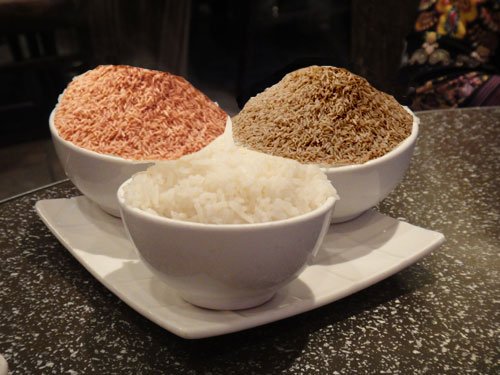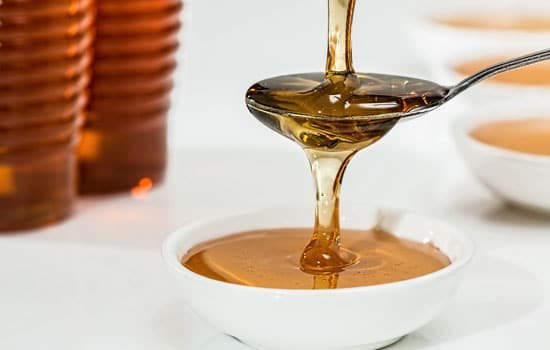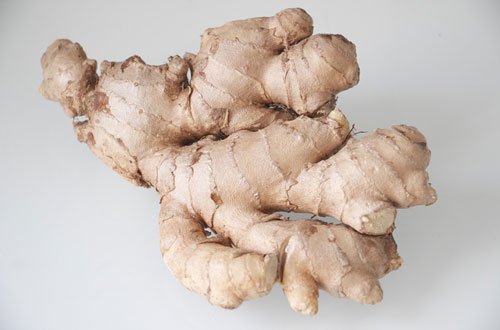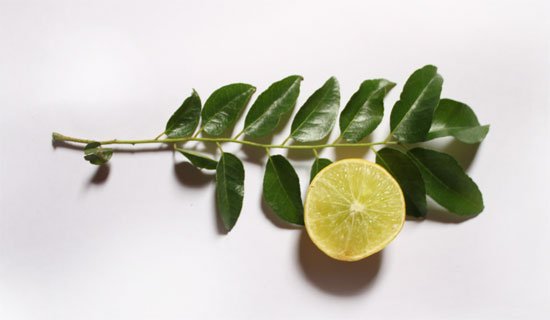With a low caloric content, white & brown rice has a wide range of properties and health benefits that make it an essential food when planning a daily balanced diet.
White rice possesses qualities that make it ideal for any type of diet. It contains only 103 calories per half cup; Contains no cholesterol, no sodium, no fats. It does not contain gluten, and it is not allergenic and is easy to digest.
In many countries, rice is taken as an alternative to bread and is consumed daily as a meal. In countries like Japan, for example, at the table, they first serve a plate of white rice, and then other food.
It’s low-fat content makes it ideal for cardiovascular care, as long as fat is not added to the cooking. Because of its starch content, it is an excellent source of energy, and brown rice is also an excellent source of vitamins of group B., fibre and minerals.
To maintain a balanced diet, the consumption of rice several times a week is important, especially as an accompaniment to meats, and vegetables.
Nutritional Value & Health Benefits of Rice
Carbohydrates
Starch is a kind of complex carbohydrate, which offers more vitamins and fiber than any carbohydrate, and accounts for 90% of the calories provided by Rice.
Both simple carbohydrates and complex carbohydrates are important in the daily diet, providing the fuel that the body needs to function properly.
Fiber
Experts recommend the consumption of 25gr. Fiber diaries. Foods rich in fiber help the digestive system and its proper functioning, preventing the onset of intestinal diseases.
Half cup of white rice provides 0.3 gr. Of fiber, while the same amount of brown or whole rice provides 1.8 gr.
Proteins
Proteins provide amino acids, necessary to build and maintain tissue, enzymes, hormones and antibodies. The body does not produce essential amino acids, and that is why it is necessary to obtain them through foods rich in proteins, which make it possible for the body to synthesize and absorb the amino acids.
Rice provides the 8 essential amino acids in required amounts. This is why, despite the low total protein content (2.0 / 2.5mg per half cup of rice), the best quality proteins are considered.
Fat
Fats provide energy, and help the absorption of vitamins soluble in them. White rice contains only about 0.2g. Of fat, and the integral 0.9gr. For every half cup.
Folic acid
Part of the family of vitamin B has been shown to contribute to the formation of red cells and in the synthesis of DNA and RNA.
It is enriched with thiamine, niacin and iron , in addition to being fortified with folic acid. A half cup of fortified rice provides 8% of the recommended total daily intake of folic acid.
Thiamine
The Vitamin B1 contributes to the breakdown of glucose for energy, it maintains healthy brain and nerve cells, heart in good condition, normal appetite and proper mental agility. It can not be stored by the body, and that is why it is important to consume foods that contain it.
A half cup of fortified rice provides 7% of the recommended daily intake.
Niacin
Like thiamine, it is required in the breakdown of glucose to produce energy and is also essential for the health of the skin and the nervous system. Half a cup of brown rice provides 8% of the daily consumption required, and the same amount of white rice provides 6%.
Iron
Iron is an important element of many enzymes required for the breakdown of glucose and fatty acids into energy. A half cup of cooked brown rice provides 8% of the recommended daily consumption, and half a cup of white rice provides 7%.
Vitamin E
Soluble in fatty acids, it protects vitamin A and certain fatty acids from oxidizing in the cells of the body.
Metabolism
Important for metabolism, phosphorus contributes to the formation of bones and teeth. Half a cup of brown rice provides 8% of the total required, while half a cup of white rice provides 3% of the meal.
Rice Varieties
Brown or whole rice is a whole grain that has its outer fibrous shell which makes it more nutritious than white rice. In Europe, this rice is commonly called “rice cargo”, as that is the way sea transports it.
Brown rice contains green grains that have not matured at the time of harvest. This is due to the mixing of seeds on the one hand, since not all grains ripen at the same time on the other, and separating them is difficult and costly. These green grains are also found in white rice, but by the process of husking to which this type of rice is subjected, are less visible.
White rice undergoes a debarking and polishing process in which it loses much of its nutrients, containing less niacin, thiamine, magnesium, zinc, and fibre than brown rice. In some countries, it is either coated with magnesium silicate or coated with a mixture of glucose and talc.
Red rice has a layer of red bean, while black rice is characterized by a layer of black bean.
The Italian arborio rice, of white and round grain, is considered the finest ones by its great capacity of absorption of liquids during the baking without being softened too much.









































Discussion about this post